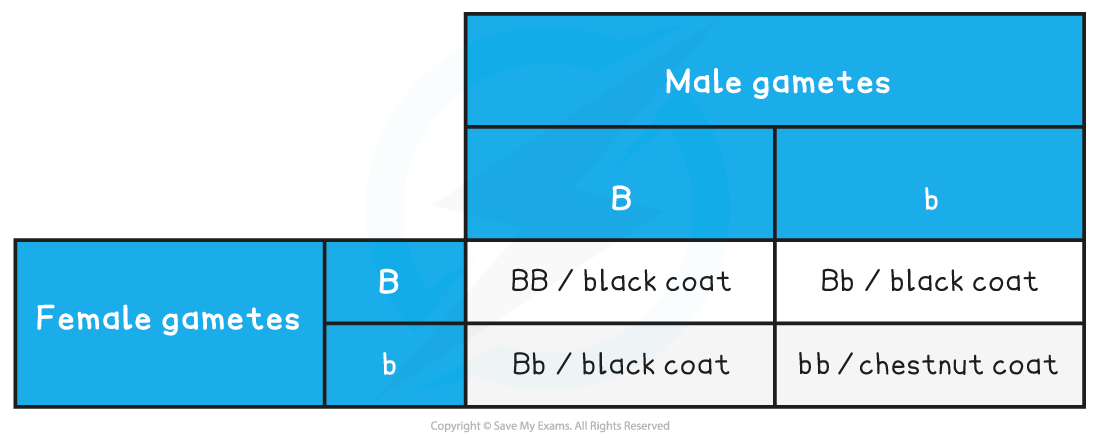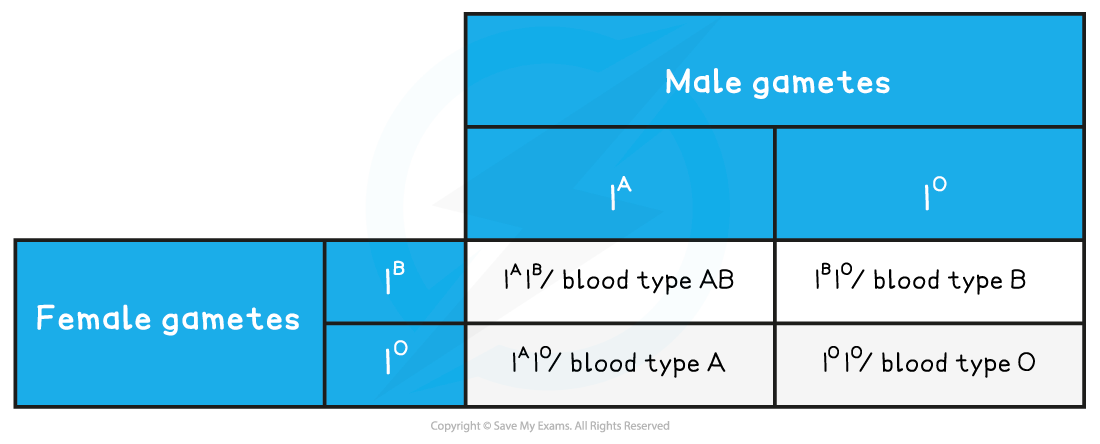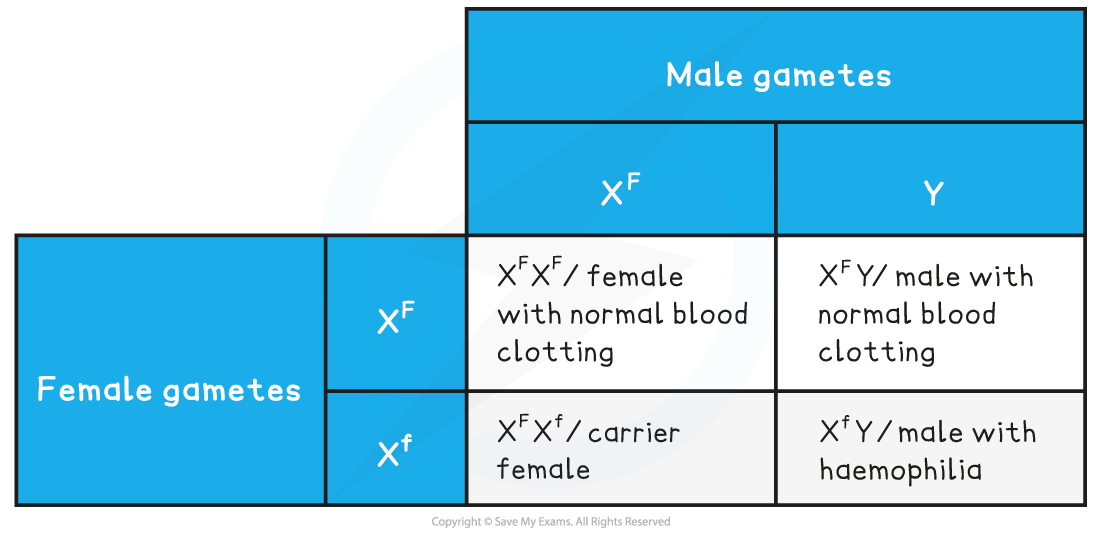Predicting Inheritance: Monohybrid Crosses (Cambridge (CIE) A Level Biology): Revision Note
Exam code: 9700
Predicting inheritance: monohybrid crosses
Monohybrid inheritance
Monohybrid inheritance looks at how the alleles for a single gene are passed on from one generation to the next
Known information about the genotypes, phenotypes and the process of meiosis are used to make predictions about the phenotypes of offspring that would result from specific breeding pairs
When two individuals sexually reproduce there is an equal chance of either allele from their homologous pair making it into their gametes and subsequently the nucleus of the zygote
This means there is an equal chance of the zygote inheriting either allele from their parent
Genetic diagrams are often used to present this information in a clear and precise manner so that predictions can be made
These diagrams include a characteristic table called a Punnett square
The predicted genotypes that genetic diagrams produce are all based on chance
There is no way to predict which gametes will fuse so sometimes the observed or real-life results can differ from the predictions
Worked example: genetic diagram
One of the genes for the coat colour of horses has the following two alleles:
B, a dominant allele produces a black coat when present
b, a recessive allele produces a chestnut coat when present in a homozygous individual
In this example a heterozygous male is crossed with heterozygous female
Parental phenotype: black coat x black coat
Parental genotype: Bb Bb
Parental gametes: B or b B or b

Predicted ratio of phenotypes in offspring – 3 black coat : 1 chestnut coat
Predicted ratio of genotypes in offspring – 1 BB : 2 Bb : 1 bb
Codominance
When working with codominant alleles the genetic diagrams can be constructed in a similar way, however the genotypes are represented using a capital letter for the gene and superscript letters for the alleles (e.g. IAIA)
There will be more possible phenotypes and so the predicted ratios will be different
Worked example: codominance
The gene for blood type has three alleles:
A, a dominant allele produces blood type A
B, a dominant allele produces blood type B
O, two recessive alleles will produce blood type O
In this example a blood type A person is crossed with a blood type B person
Parental phenotype: Blood type A x Blood type B
Parental genotype: IAIO IBIO
Parental gametes: IA or IO IB or IO

Predicted ratio of phenotypes in offspring - 1 Blood type AB : 1 Blood type A : 1 Blood type B : 1 Blood type O
Predicted ratio of genotypes in offspring: 1 IAIB : 1 IAIO : 1 IBIO : 1 IOIO
Sex-linkage
Sex-linked genes are only present on one sex chromosome and not the other
This means the sex of an individual affects what alleles they pass on to their offspring through their gametes
If the gene is on the X chromosome males (XY) will only have one copy of the gene, whereas females (XX) will have two
There are three phenotypes for females - normal, carrier and has the disease, whereas males have only two phenotypes – normal or has the disease
Worked example: sex-linkage
Haemophilia is a well known sex-linked disease
There is a gene found on the X chromosome that codes for a protein called factor VIII. Factor VIII is needed to make blood clot
There are two alleles for factor VIII, the dominant F allele which codes for normal factor VIII and the recessive f allele which results in a lack of factor VIII
When a person possesses only the recessive allele f, they don’t produce factor VIII and their blood can't clot normally
The genetic diagram below shows how two parents with normal factor VIII can have offspring with haemophilia
Parental phenotypes: carrier female x normal male
Parental genotypes: XFXf XFY
Parental gametes: XF or Xf XF or Y

Predicted ratio of phenotypes in offspring - 1 female with normal blood clotting : 1 carrier female : 1 male with haemophilia : 1 male with normal blood clotting
Predicted ratio of genotypes in offspring: 1 XFXF : 1 XFXf : 1 XFY : 1 XfY
Examiner Tips and Tricks
Make sure to include all of your working out when constructing genetic diagrams. It is not enough just to complete a punnett square, you need to show that you have thought about the possible gametes that can be produced by each parent. Also, remember to state the phenotype as well as the genotype of the offspring that result from the cross. Read the questions carefully when answering sex-linked inheritance questions – is the question asking for a probability for all children or is it asking about a specific gender (boys or girls).

Unlock more, it's free!
Did this page help you?